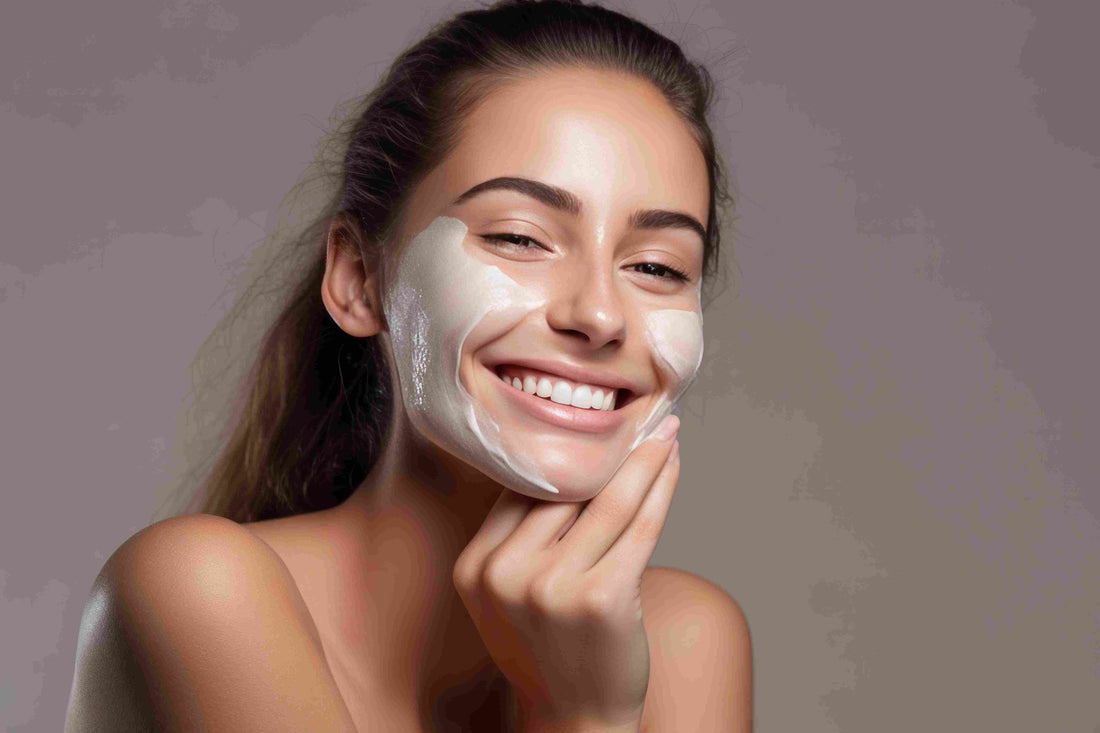
The moisture makers
A triple threat against dry skin.
Your guide to the three most hydrating skincare ingredients...
Humectants
Humectants such as glycerine and hyaluronic acid quench thirsty skin by attracting moisture to the skin and boosting the resilience of the skin barrier.
Hyaluronic acid has become a bit of a buzzword in skincare and rightly so! The hero ingredient draws water to the skin and retains it in the upper and lower layers of skin. It can be thought of like a water reservoir, as each molecule holds 1000x its weight in water.
Humectants can be even more effective when coupled with a vitamin A formula as they work together to improve our skin's ability to retain hydration. Because of this, we recommend applying a humectant-based serum to dampened skin before adding a vitamin A formula for the ultimate barrier-fortifying moisture boost.
Ceramides
Ceramides can always be relied on to come to the rescue and nourish parched skin. Ceramides are lipids (fat molecules) that occur naturally in the skin. As we age, our ceramide levels become depleted which can weaken the skin barrier and make it more vulnerable to external aggressors. This can also lead to irritation, dryness and discomfort. One remedy for this is the topical application of ceramides, which can bring comfort to tight feeling skin and strengthen the barrier. Lipidic ingredients such as ceramide NP reinforce the skin’s barrier so it can recover from Trans Epidermal Water Loss (TEWL) faster. Ceramide NP is one particular kind to look out for. As one of the smaller lipid molecules, it can penetrate further into the skin to improve the skin barrier function. This means that your skin can hold onto hydration better, won’t be as easily irritated and will have increased healing ability.
Emollients
Like a cosy winter blanket, emollients such as squalane, provide a barrier between your skin and external elements thus helping to reduce dryness, flaking and any irritation. There are different types to look out for - moisturising agents, occlusive emollients lock in moisture by creating a barrier on the skin’s surface to prevent water loss, whilst humectant emollients attract and retain moisture in the skin’s upper layers. You can often come across emollients in products intended to repair dry skin and can also use emollients to calm the effects of eczema and psoriasis.
TIP: Applying products to damp skin increases permeability of products slightly more than applying them to wet skin. Studies have shown that the skin can become more accessible to hydrophilic molecules (ie. Molecules attracted to water such as hyaluronic acid) when it has had time to absorb water into the stratum corneum.
Dryness v Dehydration
Dehydrated skin differs from dry skin, with the latter being a skin type you are born with and the former a condition that can happen to ANY skin type. If you have dry skin, it means you’re lacking sebum (aka oil, our skin’s natural moisturiser), whilst dehydration occurs when you are lacking water content. A diminished water supply in the epidermis, the outermost layer of skin, can cause premature ageing in the form of “drinkles” which only appear on the epidermis yet can deepen further into wrinkles if water is not replenished.
